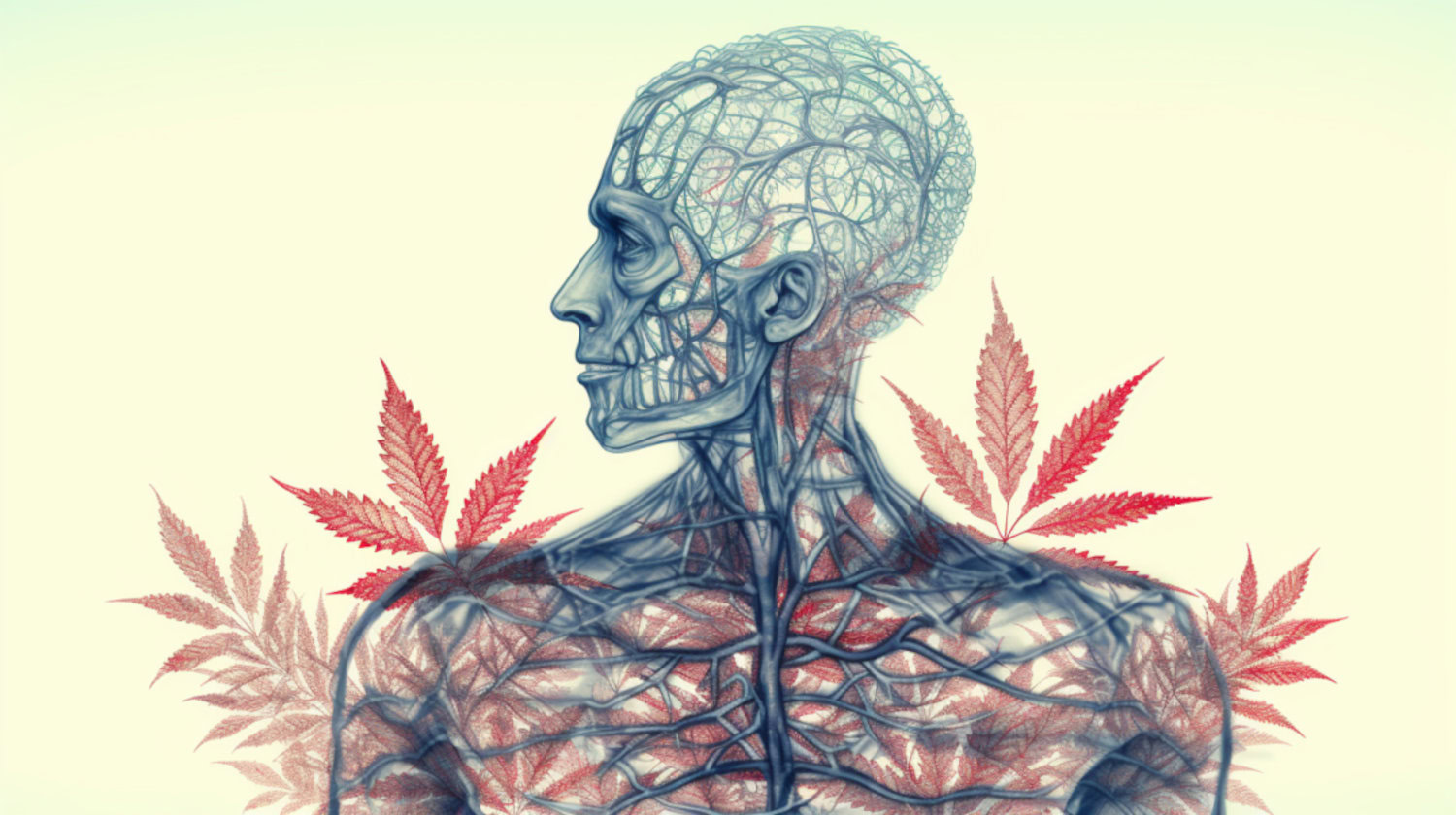In This Article
- What Are Cannabinoids?
- What Are Terpenes?
- How They Affect the Body Differently
- How Do They Work Together?
- How Are They (And Their Combinations) Relevant to Patients?
- Cannabinoids vs Terpenes FAQ
- Are Terpenes and Cannabinoids the Same Thing?
- What Do Terpenes Do For Your High?
- How Do Terpenes and Cannabinoids Work Together?
- What Are the Benefits of Cannabinoids and Terpenes?
- References
What shapes the cannabis experience? Most people are aware of cannabinoids like THC and CBD, which directly impact sensations and emotions. But there’s more to it. The plant’s fragrant compounds, known as terpenes, are key players, too.
The cannabinoids vs terpenes debate is simple at its surface but can get quite complex. While cannabinoids interact with the body in noticeable ways, terpenes add depth to the experience with their scents, flavors, and how they modify the effects of cannabis.
What Are Cannabinoids?
Cannabinoids are powerful compounds found in cannabis. They interact with the body's endocannabinoid system (ECS), which regulates bodily functions such as pain sensation, mood, sleep, and appetite.
The most well-known cannabinoids are tetrahydrocannabinol (THC) and cannabidiol (CBD). THC is known for its intoxicating effects, also known as the euphoric “high” from cannabis. Meanwhile, CBD has many potential therapeutic benefits without intoxication.
Cannabinoids like THC and CBD bind to and interact with specific receptors known as cannabinoid receptors type 1 (CB1) and type 2 (CB2) found throughout the body. This binding impacts how the body maintains balance and influences everything from stress levels to physical discomfort.1
What Are Terpenes?

Terpenes are just some of the fragrant oils found in many plants, including cannabis, and are partly responsible for the plant’s aromas and flavors.
In cannabis, these compounds affect the sensory experience, such as the sweet and pleasant smell of myrcene or the bright and citrusy aroma of limonene. In addition, they may contribute to the effects of cannabis through their interaction with cannabinoids.
Research shows that cannabis contains over 150 different terpenes, each adding depth to the plant’s complex profile.2 While terpenes are not known to produce intoxicating effects, they may affect a cultivar's overall impact, potentially enhancing or altering its effects.
How They Affect the Body Differently
Cannabinoids interact directly with the body’s ECS, which has receptors throughout the body and brain. THC binds to the CB1 receptors in the brain, creating the well-known cannabis "high." CBD, though, influences these receptors more subtly, potentially helping to reduce inflammation and pain without the high.
Terpenes add to the experience with their aromas and flavors and are thought to affect the body more indirectly. They don’t interact directly with cannabinoid receptors within the ECS. Still, they may impact the body more subtly, affecting how it processes certain compounds or supports the production of its natural endocannabinoids.
Some researchers propose that the placebo effect may play a role in how terpenes shape the cannabis experience.2 This suggests that the aromas and flavors of terpenes may also affect the psychological perception of cannabis.
How Do They Work Together?

Cannabinoids and terpenes are thought to interact through the entourage effect to create a more holistic experience. This interaction suggests that the plant’s impact is greater when its full spectrum of compounds works together rather than alone.
While the direct interactions of terpenes with cannabinoids are still being researched, beta-caryophyllene is the only one so far to be found to interact with CB2 receptors.² This may contribute to their anti-inflammatory effects.
However, much research suggests that many terpenes may not directly improve cannabinoid receptor activity but could affect other important processes in the body. Some experts believe terpenes might work on their own to influence THC’s effects on the body.³
Research shows terpenes may interact with various body parts, not just cannabinoid receptors.
For example, they may affect TRPV1 receptors, which could explain why whole cannabis may feel different than just THC alone.3 This shows how complex the interactions between cannabis compounds can be.
Additionally, some terpenes, like borneol, may alter the way THC works in the body by increasing the permeability of the blood-brain barrier (BBB).4,5 This could improve THC’s ability to reach the brain, potentially amplifying or modifying its effects.
How Are They (And Their Combinations) Relevant to Patients?
The combination of cannabinoids and terpenes is important for patients who use cannabis for medical purposes. Each component plays a role in modulating the effects of the other, which can lead to a more targeted and effective treatment outcome.
For example, beta-caryophyllene interacts with CB2 receptors. These are mainly located in the immune system and may help regulate inflammation and pain responses. A combination of the terpene and relevant cannabinoids may provide better relief for inflammatory conditions and chronic pain.2
While the combination of cannabinoids and terpenes may show promise for some conditions, finding the perfect mix for each condition isn’t fully understood yet. Early research shows these compounds may work well together, but individual responses vary.
Cannabinoids vs Terpenes FAQ

Are Terpenes and Cannabinoids the Same Thing?
No, they're completely different components. Cannabinoids primarily affect how cannabis interacts with the body's ECS, influencing things like relaxation or alertness. Terpenes, the compounds that help give cannabis its smell and flavor, may modify the effects of cannabinoids. However, they do not directly impact the ECS like cannabinoids do.
What Do Terpenes Do For Your High?
Terpenes may be able to improve the effects of cannabis by modifying the intensity and quality of the high. They don't produce a high on their own, but they may be able to affect how the body responds to cannabinoids.
For example, some studies suggest that linalool, also found in lavender, has anti-anxiety and sedative effects. Likewise, early findings on pinene show that it may help reduce anxiety and inflammation. However, remember that no conclusive studies on humans have confirmed these effects yet.
How Do Terpenes and Cannabinoids Work Together?
Terpenes and cannabinoids are believed to work together to improve and modify the effects of cannabis through a phenomenon known as the entourage effect. This synergy means terpenes may influence how cannabinoids interact with the body’s receptors, potentially making the effects stronger or more balanced.3
What Are the Benefits of Cannabinoids and Terpenes?
Cannabinoids directly influence the body's systems, managing pain, mood, and more. Terpenes help give cannabis its aroma and flavor and are believed to help cannabinoids work better through the "entourage effect." Together, they are thought to create a more nuanced and effective cannabis experience.3
References
- Sheikh NK, Dua A. Cannabinoids. In: StatPearls [Internet]. StatPearls Publishing; 2023. https://www.ncbi.nlm.nih.gov/books/NBK556062/
↩︎ - Booth JK, Bohlmann J. Terpenes in Cannabis sativa – From plant genome to humans. Plant Science. 2019;284:67-72. doi:https://doi.org/10.1016/j.plantsci.2019.03.022 ↩︎
- Finlay DB, Sircombe KJ, Nimick M, Jones C, Glass M. Terpenoids From Cannabis Do Not Mediate an Entourage Effect by Acting at Cannabinoid Receptors. Frontiers in Pharmacology. 2020;11. doi:https://doi.org/10.3389/fphar.2020.00359
↩︎ - Zhang QL, Fu BM, Zhang ZJ. Borneol, a novel agent that improves central nervous system drug delivery by blood-brain barrier permeability. Drug Deliv. 2017;24(1enhancing):1037-1044. doi:10.1080/10717544.2017.1346002
↩︎ - McPartland JM, Russo EB. Cannabis and Cannabis Extracts. Journal of Cannabis Therapeutics. 2020;1(3-4):103-132. doi:https://doi.org/10.1300/j175v01n03_08
↩︎
The information in this article and any included images or charts are for educational purposes only. This information is neither a substitute for, nor does it replace, professional legal advice or medical advice, diagnosis, or treatment. If you have any concerns or questions about laws, regulations, or your health, you should always consult with an attorney, physician or other licensed professional.




